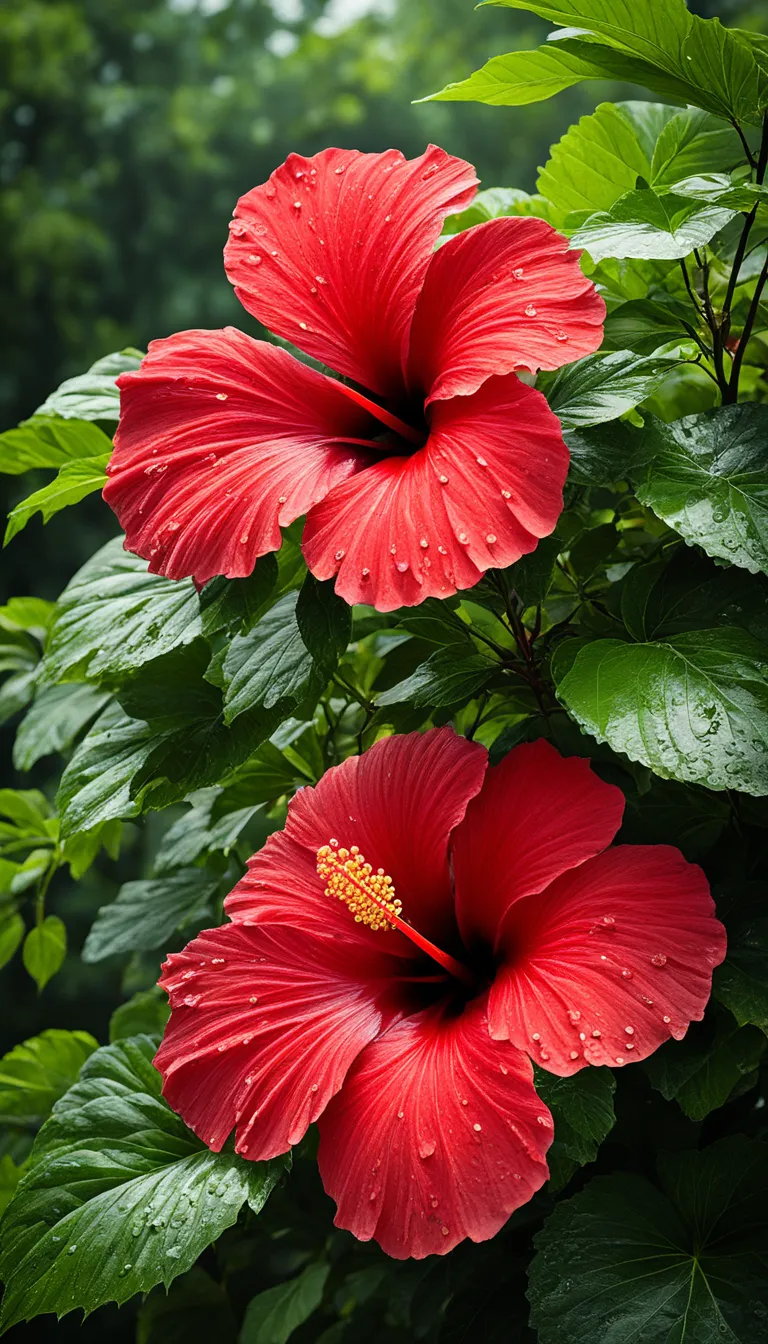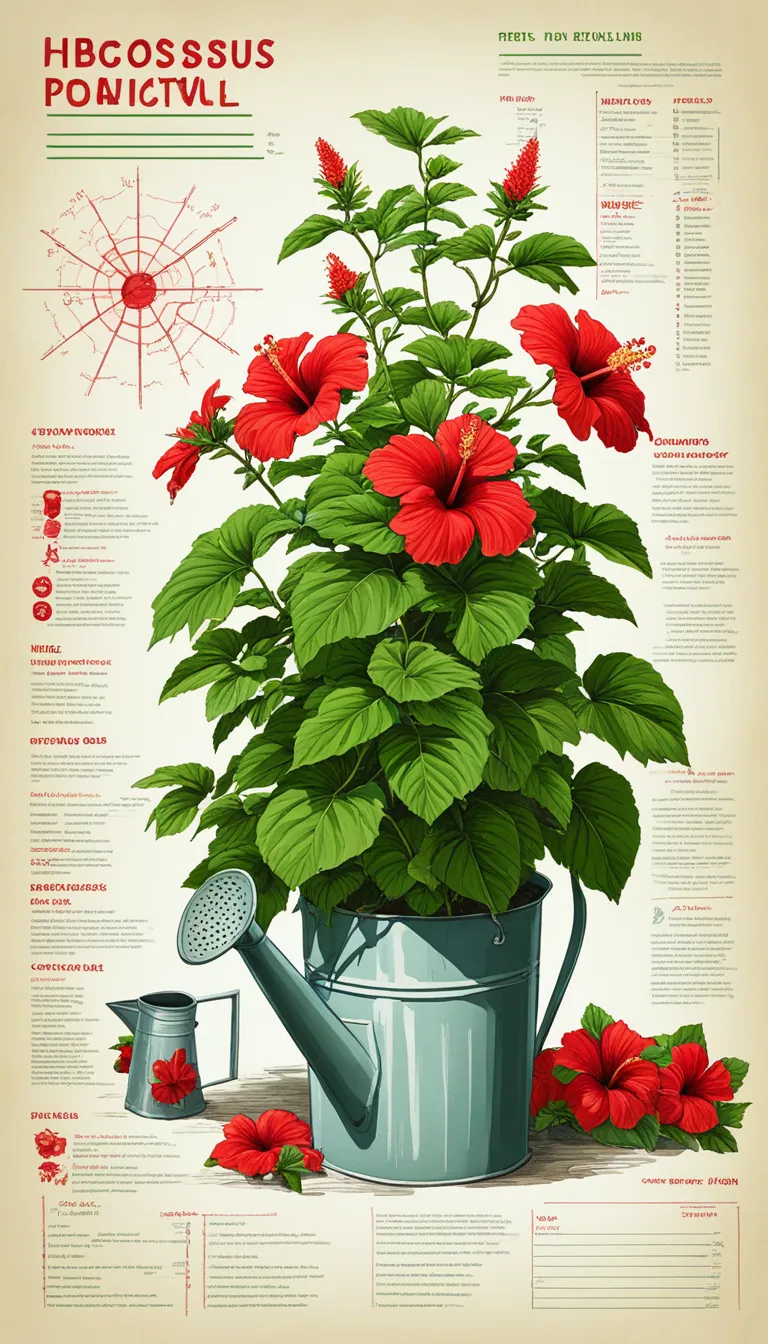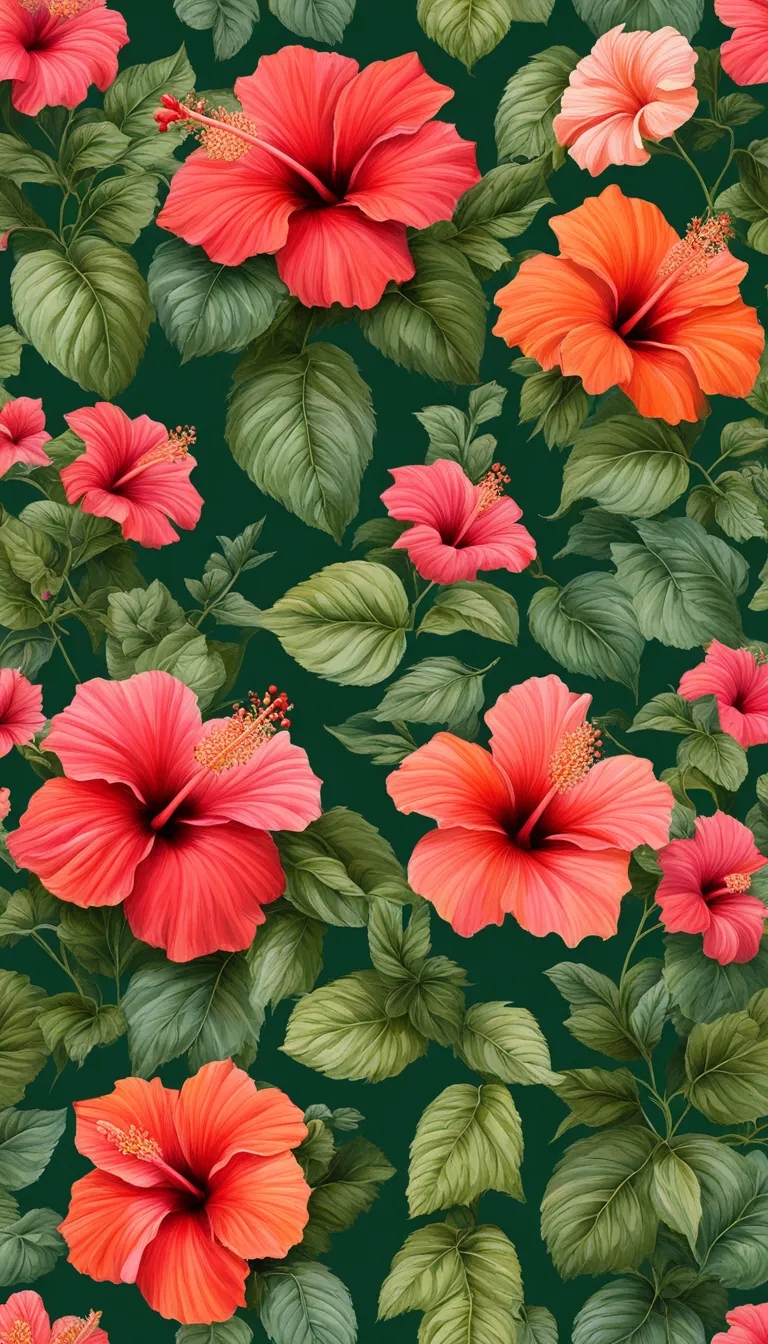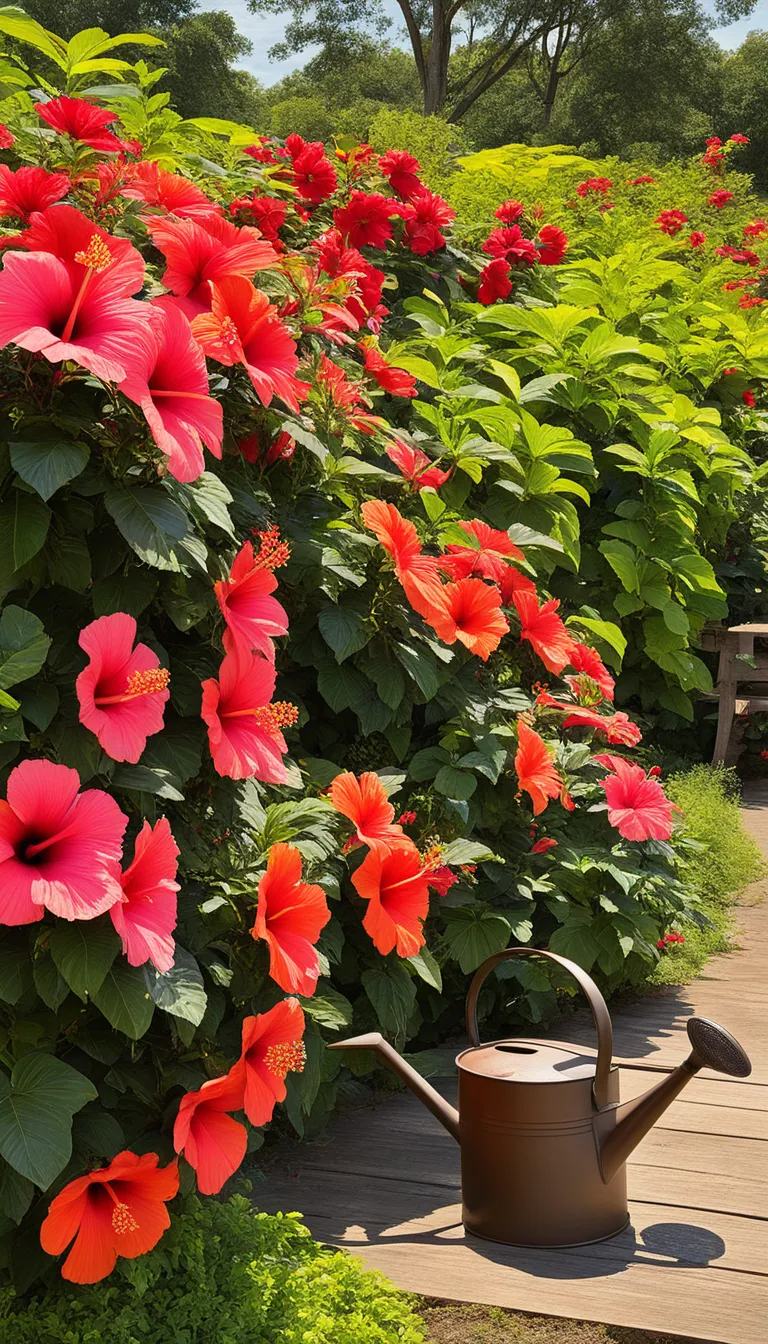Explore the vibrant world of hibiscus flowers, a botanical wonder that brightens up gardens and homes with its flamboyant blooms. The hibiscus plant is not just a feast for the eyes; it’s a symbol of beauty and charm that transcends ordinary floral expectations. With a surprising explosion of colors ranging from the deepest reds to the most delicate pinks, hibiscuses are a favorite among gardeners and flower enthusiasts alike.
But what exactly is a hibiscus? It’s a genus of flowering plants in the mallow family, Malvaceae, that is known for its large, showy flowers. These tropical beauties are not just about looks; they come with a rich history and cultural significance, often symbolizing warmth, hospitality, and exotic allure in various cultures. Whether you’re looking to add a touch of the tropics to your landscape or seeking a natural herbal remedy, the hibiscus plant stands out as a versatile and captivating choice.
When it comes to planting and caring for hibiscus, you’re in for a treat! These plants love the sun and thrive in well-drained soil, making them perfect for those sunny spots in your garden. But don’t worry, we’ve got all the care tips you need to keep your hibiscus happy and healthy. From the right amount of water to the perfect fertilizer mix, we’ll guide you through the essentials of hibiscus care. And let’s not forget about the varieties!
Did you know that there are over 200 species of hibiscus? Each one boasts unique characteristics that can cater to any gardener’s preference. Whether you’re drawn to the classic Hibiscus rosa-sinensis or the striking Hibiscus syriacus, there’s a type of hibiscus out there for you. So, are you ready to dive into the lush and explosive world of hibiscus flowers? Let’s get started on this floral adventure together!

What is Hibiscus?
Hibiscus, often associated with tropical paradises and exotic locales, is more than just a pretty face. It’s a genus of flowering plants in the mallow family, Malvaceae. Have you ever sipped on a refreshing hibiscus tea or adorned your hair with its vibrant petals? If so, you’ve interacted with this stunning and versatile plant.
But what really sets the hibiscus apart? Well, its cultural significance spans the globe, from symbolizing nations to featuring in traditional medicines. Moreover, it’s not just about the aesthetics; hibiscus plants are known for their large, trumpet-shaped flowers with five or more petals, ranging in color from white to pink, red, purple, or yellow. They’re a feast for the eyes!
Let’s not forget, hibiscus plants are also remarkably resilient. They can thrive in a variety of climates, although they prefer a warm, temperate zone. Are you ready to dive into the world of hibiscus and discover the explosion of colors and surprise they bring to any garden or home?
- Tropical Origins: Hibiscus is native to warm-temperate, subtropical, and tropical regions throughout the world.
- Symbolism: The hibiscus flower is a national symbol in countries like Haiti and South Korea.
- Uses: Apart from ornamental use, hibiscus is used in teas, culinary, and has medicinal properties.

How to Care for Hibiscus?
Caring for hibiscus plants may seem like a task meant only for those with a green thumb, but fear not! With a few simple tips, you can ensure your hibiscus is as vibrant and explosive in color as a tropical sunset. So, are you ready to transform your garden into a tropical paradise?
First things first, sunlight is to hibiscus what applause is to a performer – absolutely essential! These beauties thrive in full sun, so make sure they get at least 6 to 8 hours of direct sunlight each day. But what about water, you ask? Hibiscus plants love moisture, but hate to be waterlogged. Ensure you provide them with consistent watering, allowing the soil to dry slightly between watering sessions.
When it comes to fertilizing, think of it as the secret sauce to a blooming hibiscus. Use a balanced, slow-release fertilizer every few weeks during the growing season. And just like us, hibiscus can get sick too. Keep an eye out for common pests like aphids and spider mites, and treat them promptly with insecticidal soap or neem oil.
- Sunlight: Full sun (6-8 hours per day)
- Watering: Consistent, allow soil to dry slightly between watering
- Fertilizing: Balanced, slow-release fertilizer during growing season
- Pest Control: Watch for aphids and spider mites, use insecticidal soap or neem oil as treatment
Remember, with the right care, your hibiscus can be the centerpiece of your garden, bursting with color and life. Now, go forth and cultivate your very own slice of the tropics!

What are the Hibiscus Varieties?
Step into the colorful realm of hibiscus, and you’ll find a surprising explosion of varieties that could dazzle even the most seasoned gardeners. Have you ever wondered just how many faces this stunning plant can have? Well, let’s dive into the world of hibiscus varieties!
First off, let’s talk about the tropical hibiscus, also known as Hibiscus rosa-sinensis. These are the showstoppers, with large, vibrant blooms that could make any onlooker’s heart skip a beat. But did you know there’s also the hardy hibiscus, scientifically called Hibiscus moscheutos? These are the tough cookies of the hibiscus family, braving cooler climates and still delivering stunning floral displays.
And then, there’s the Hibiscus syriacus, commonly known as the Rose of Sharon, which not only brings beauty to your garden but also a sense of history, as it’s often connected with biblical references. But wait, there’s more! The Hibiscus trionum, or Flower-of-an-Hour, is a charming variety that offers a short-lived yet breathtaking spectacle with its delicate blossoms.
- Tropical Hibiscus (Hibiscus rosa-sinensis)
- Hardy Hibiscus (Hibiscus moscheutos)
- Rose of Sharon (Hibiscus syriacus)
- Flower-of-an-Hour (Hibiscus trionum)
Each variety has its own unique care requirements, blooming periods, and resistance to pests and diseases. Whether you’re drawn to the exotic flair of the tropical varieties or the resilient beauty of the hardy ones, there’s a hibiscus out there to make your garden truly unforgettable. So, are you ready to pick your hibiscus muse and create a personal paradise bursting with color and life?





